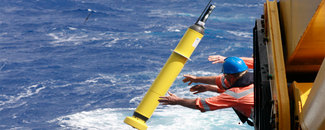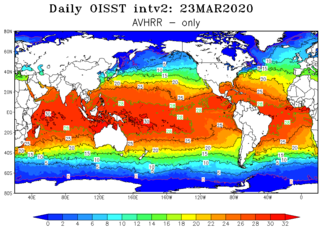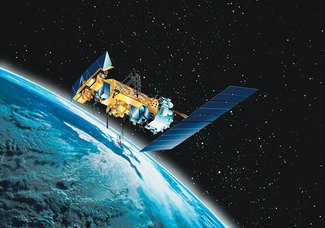Updated Daily Optimum Interpolation Sea Surface Temperature Released

NCEI receives oceanographic data from all types of observing systems—from satellites in space, buoys moored to the seafloor, and drifting profiling floats. Each resource is valuable, and the data we house form one of the most significant archives on Earth.
NCEI also utilizes the vast amounts of data we steward to create integrated products that support the broader scientific and societal application communities. NCEI has just released a new version of one of these important integrated products.
The Daily Optimum Interpolation Sea Surface Temperature (DOISST) blends sea surface temperature (SST) data from ships, buoys, and profiling Argo floats with SSTs from satellites on a regular global grid to create maps of sea temperatures. A spatially complete SST map is produced on a daily basis to fill in gaps by statistical construction, a commonly used scientific method of interpreting data.
An Essential Climate Indicator
DOISST is a blend of in situ and satellite observations that date from September 1981. The analysis and associated map are routinely updated every day. SST is an essential climate indicator and has been widely used in climate monitoring, assessment, and research.
There are several types of SST products. Some are based completely on satellite observations which provide better spatial coverage but may have systematic biases. Others are based on in situ observations from ships, drifting buoys, and moored buoys. DOISST utilizes both. DOISST is adjusted for the differences between the satellite and in situ observations to compensate for platform differences and sensor biases.
The Role of Argo Floats
DOISST version 2.1 also includes observations from Argo floats. Argo is an international collaboration that collects high-quality temperature and salinity profiles for the upper 2,000 meters (some are deeper or shallower) of the ice-free global ocean. The data come from battery-powered autonomous floats that transmit their data to satellites when they periodically reach the surface.
Argo observations play an important role in SST reconstruction, particularly in the data-sparse regions that are not sampled by ships and surface buoys, such as the equatorial oceans and the Southern Ocean. In DOISST version 2.1, the inclusion of Argo data increased the total coverage of in situ SSTs from about 65% to about 75% over the global ocean.





